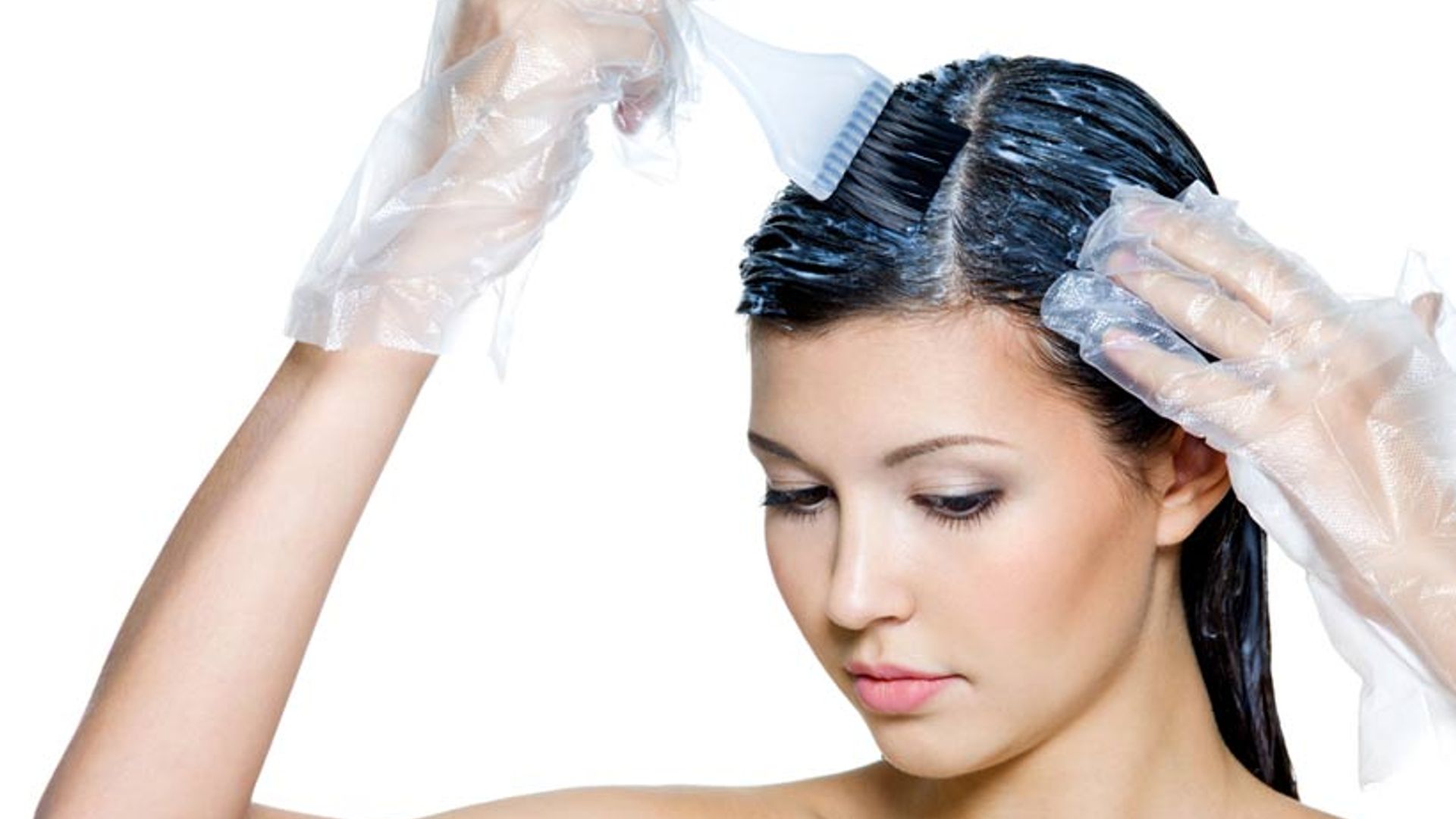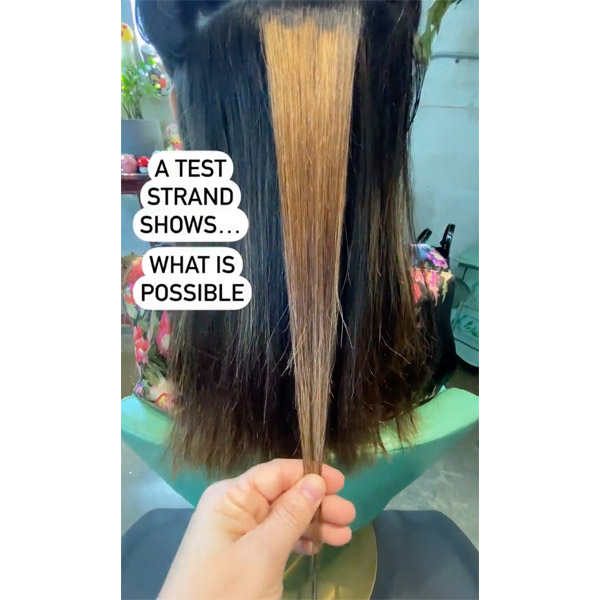Table Of Content

Protect your hair from the sun by wearing hats or using UV-protective sprays or leave-in conditioners when spending time outdoors. Switch to shampoos, conditioners, and styling products specifically designed for color-treated hair. These products are formulated to be gentle and protect the color from fading. Use one, like the L’Oréal Paris EverPure Repair Remedy Balm, once or twice a week. After shampooing, slather on the mask and leave it on for three to five minutes before washing out. For all-over color…try L’Oréal Paris Féria or L’Oréal Paris Superior Preference.
Good Dye Young Hair Dye in Kowabunga and Stoned Pony — Review and Photos - Allure
Good Dye Young Hair Dye in Kowabunga and Stoned Pony — Review and Photos.
Posted: Sun, 20 Dec 2020 08:00:00 GMT [source]
Your Hair’s Porosity
13 Best Ammonia-free Hair Colors for a Safer Coloring Experience - PINKVILLA
13 Best Ammonia-free Hair Colors for a Safer Coloring Experience.
Posted: Thu, 22 Feb 2024 08:00:00 GMT [source]
The reason for this is because you don’t need to worry about harmful chemicals that are used in permanent hair color. As gorgeous as that new color will look, you run the risk of damaging it—doubly so if you’re bleaching. “Processed hair is not necessarily damaged, but it’s compromised,” explains Minardi. “If you’re blonde, you can simply apply the color and then process as directed. Truth be told, box dyes can actually set you up on a journey of hair damage, with more time and money ultimately being spent in the end.
Products You Might Also Like
Bleach lasts as long as a hair dye in terms of how often you need to retouch. If you want to maintain your roots, you’ll need to get them touched up every four to six weeks, much like regular color. There is a big difference between doing a complete recolor, lightening or darkening a previous dye job, or simply touching up your roots.
How long does permanent hair dye last?
This request, she says, will help prevent her clients from experiencing any scalp sensitivities the day of their appointment. "Washing your hair prior to an appointment allows barriers to be removed like sebum buildup, residue, or any pollution your hair may have absorbed since your last wash." It's been said that starting your hair color journey at a young age could actually backfire, leading to more gray hair down the line.

You can absolutely have too much of a good thing, and hair dye is no exception. "Less is more, and semi- or demi-permanent colors tend to be the least damaging of all hair dyes," Luza explains. Still, patience is key when it comes to dye frequency, and waiting at least four weeks between color enhancements is best for maintaining hair health. There's flexibility regarding roots, but minimizing chemical exposure to your hair is always the best option to keep your lengths from feeling dry or over-processed. The type of dye you use to color your hair has a significant impact on how often you can or should dye your hair. If you’re using temporary or semi-permanent hair dyes, you may get away with dyeing your hair more often than with a permanent dye.
How to Make Your Hair Color Last Longer
Using a deep conditioner like Olaplex No. 8 weekly helps revive your hair’s internal structure. Lighten your ends for an on-trend look with this at-home hair dye. And when you do need to glam up, make sure you apply a heat-protecting styling product before, during and after styling. Once a week might be enough – any more than that and you’re going to damage your hair. Of course, if you have damaged hair or if your scalp is sensitive, you might need to take some extra steps to protect your hair before and after coloring it.
Top tips for caring for dyed hair
Although demi-permanent dyes contain some ingredients that can damage your hair, they’re less damaging than permanent dyes. Semi-permanent hair color is also temporary but lasts a bit longer than temporary hair color — usually about four to six washes, with some products stating up to 12. It doesn’t contain chemicals like ammonia or peroxide and doesn’t lighten hair, so, while it fades more quickly than a permanent dye, it’s also safer to use on fragile, damaged, permed, or relaxed hair. In general, the recommended time frame is at least 6 to 8 weeks for dye upkeep if you’re using demi-permanent and permanent hair dyes.
Carryl explains that henna comes from the henna plant — which is commonly found in parts of Africa, India, Pakistan, Yemen, and most of the Middle East. Its leaves are used to naturally dye the hair and skin, which is why it's a common ingredient in certain hair dyes and temporary tattoos. It might not have colored at all, or it ends up a completely different color. Now you are wondering if you can purchase another hair dye and color it again, the next day.
Protect your color-treated hair from heat damage by investing in a quality heat protectant and avoiding styling tools when possible. Hair care should include deep conditioning, using color-safe products, and Function of Beauty’s custom haircare range to maintain the hair’s health while protecting its porosity from harsh chemicals. Gray hairs require permanent dye for a lasting color change, while demi-permanent dyes can last up to 24 shampoo washes. The frequency of how often you should dye your hair depends on a variety of factors, such as the type and color used, as well as your own unique hair growth rate. To protect colored locks from damage, use heat-protective products and deep conditioners between sessions to keep them nourished. Experience the vibrancy of color with semi-permanent, demi-permanent, or permanent hair dyes tailored to your individual needs.
To get rid of the color, you’ll have to either let it grow out, fully color over it, or cut it. This is why you need to make sure that you know exactly how often you can dye your hair. It will depend on the type of hair dye that you are considering, and if you are doing it at home or if you are letting a professional do it for you. The only thing that you need to know is that if you are damaging your hair, it is really hard to repair it and make it healthy again. You might consider using semi-permanent hair color if you have hair that is growing really fast so that your hair doesn’t look too bad, before you can use permanent hair color to dye your hair again.
Whether you want to sport a trendy shade like rose blonde hair or something a little more natural-looking, like chestnut hair, there are plenty of options for you to choose from in these two lines. This technique is a little bit softer than ombré (sombré means “soft ombré”). To get this look, ask for highlights that are just a few shades lighter than your natural color so that the result is subtle. Hot water causes your hair shaft to rise which makes it lose moisture and be more prone to damage and frizz. Giving your hair a final rinse with cold water whenever you wash or condition it will help to seal the shaft – locking moisture and color in. Another factor that affects how often someone should dye their hair is whether they work outside where the sun has bleached out their locks.
Heat alternatives such as air-drying and heat protectants help minimize damage from styling tools on already colored hair. Temporary dyes are best for frequent use, while bleaching should be avoided. To maintain the vibrancy of your chosen hue, it is necessary to use color-safe shampoos.
Protect your hair from heat-styling tools with a heat protectant and deep condition it regularly. Choose a color within three shades of your natural hair color to minimize damage. Hair porosity affects how long you should wait between dye jobs; low-porosity requires longer times and high developer, whereas high porosity does not need as much time. Color gloss keeps colors looking vibrant, while heat protectant and deep conditioning help keep color-treated hair healthy. According to Lee, most of the accessible, at-home colors you find in drugstores are permanent dyes, meaning you’re stuck with your decision for the time being if you mess up. If you’re just looking for something to tide you over until your next appointment, she suggests going for a semi-permanent formula that will eventually wash out over time.
There’s a chance you may have to go it alone, as the fate of many salons hangs in the air. If touching up your roots or soaking your ponytail in Kool-Aid doesn’t quite scratch the itch, you can take a cue from a lot of other people these days and try to dye your own hair at home. Holding off on washing means you’ll have longer periods before you have to re-dye or get a touch-up. A deep-conditioning product or a shampoo for color treated hair can also help preserve your color through washes. It can’t be washed out, so if you miss your old color, you’d either have to re-dye it or wait for it to grow out.
We’ve also mentioned the importance of maintaining your hair between dye jobs. If you plan to dye your hair regularly, you must keep up a dedicated hair health routine. That includes using purple shampoo (if you have blonde or silver hair), hair masks, and avoiding excessive heat from tools like curling irons, blow dryers, and flat irons. Hair bleach doesn’t just cover your natural hair color — it penetrates through the follicle itself and pulls out your natural color pigment.

No comments:
Post a Comment